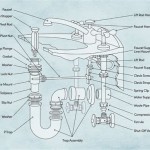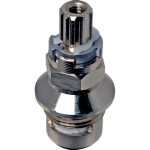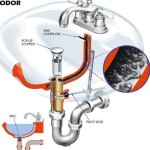How To Get Rid Of Urine Smells In Bathroom
Urine odors in bathrooms can be a persistent and unpleasant issue, detracting from the overall cleanliness and comfort of the space. The problem isn't just about the initial accident; urine contains uric acid, which crystallizes and clings to surfaces, embedding itself in porous materials like grout, tile, and even painted walls. Over time, these crystals continue to release odor, making the bathroom smell perpetually unclean, even after regular cleaning. Addressing this issue requires a systematic approach that goes beyond simple surface cleaning and targets the source of the odor.
Identifying the source of the urine smell is the crucial first step. While it may seem obvious, urine can splash and seep into unexpected places. Common areas include around the toilet base, behind the toilet, along grout lines, under the sink, and even on the bathroom rug or bath mat. Thorough inspection, using your sense of smell and even visual inspection, is necessary to locate all affected areas. Pay particular attention to areas that are difficult to reach or are commonly overlooked during routine cleaning.
Once the source(s) of the odor have been identified, the appropriate cleaning methods can be selected. Several options are available, ranging from readily available household cleaners to specialized enzymatic products. The choice depends on the severity of the odor and the type of surface affected. Regardless of the chosen method, thoroughness and persistence are key to eliminating the urine smell effectively. This article will provide a detailed guide to effectively eliminating urine odors from bathrooms, covering identification, cleaning techniques, and preventative measures.
Identifying the Source of the Urine Smell
The first, and perhaps most important, step in eliminating urine odors is accurately locating the source. This may require more than just a quick glance around the bathroom. Urine can splash and seep into crevices, becoming trapped in porous materials and releasing odors even after the initial spill has been cleaned. A systematic approach is crucial to ensure all affected areas are identified.
Begin by focusing on the area immediately around the toilet. Check the base of the toilet, feeling along the seams for any dampness or residue. Urine can seep between the toilet and the flooring, especially if the seal between the toilet and the floor is compromised. Inspect the floor directly behind the toilet, as this is another common splash zone.
Examine the grout lines around the toilet and throughout the bathroom. Grout is porous and readily absorbs urine, trapping the odor. Use a bright light to look for discoloration or staining, which can indicate areas where urine has soaked into the grout. Sniff the grout lines directly to identify areas with a particularly strong odor.
Consider the possibility of urine on the walls, especially near the toilet and sink. Splashing can occur, and the urine may not be immediately visible, especially on textured surfaces. Wipe the walls with a damp cloth and smell it to check for urine contamination. Don't forget to check the baseboards, as urine can run down the walls and collect there.
Check under the sink and around the plumbing. Leaks in the plumbing can create dampness that exacerbates urine odors. Additionally, items stored under the sink, such as cleaning supplies or towels, can absorb urine if there are spills or splashes.
Bathroom rugs and mats are often culprits in trapping urine odors. These items absorb liquids readily and can be difficult to clean thoroughly. If you suspect a rug or mat is contributing to the odor, it is best to wash it thoroughly or, in severe cases, replace it.
Use your sense of smell strategically. Getting down on your hands and knees to sniff around the toilet and other suspected areas can help pinpoint the exact location of the odor. If you are unsure, try using a blacklight. Urine will fluoresce under blacklight, making it easier to identify stains that are not visible under normal lighting. Remember to darken the room as much as possible for the blacklight to be most effective.
Cleaning Techniques for Eliminating Urine Smells
Once the source of the urine smell has been identified, selecting the appropriate cleaning method is essential. A variety of options are available, from common household cleaners to specialized enzymatic products. The choice depends on the surface being cleaned and the severity of the odor.
For general cleaning of hard surfaces like tile and linoleum, a solution of white vinegar and water can be effective. Vinegar is a natural deodorizer and can help neutralize the ammonia in urine. Mix equal parts white vinegar and water in a spray bottle and apply it to the affected areas. Let the solution sit for several minutes before scrubbing with a brush or sponge and rinsing with clean water. For stubborn stains, you can increase the concentration of vinegar or let the solution soak for a longer period.
Baking soda is another effective deodorizer and absorbent. Sprinkle baking soda liberally over the affected area and let it sit for several hours, or even overnight. The baking soda will absorb the urine and neutralize the odor. After the baking soda has sat, vacuum it up thoroughly. This method is particularly useful for carpets, rugs, and upholstered surfaces.
For porous surfaces like grout, a paste of baking soda and hydrogen peroxide can be effective. Mix baking soda with enough hydrogen peroxide to form a thick paste. Apply the paste to the grout lines and let it sit for several hours. The hydrogen peroxide will help to disinfect and brighten the grout, while the baking soda will absorb the odor. After the paste has sat, scrub the grout lines with a brush and rinse thoroughly with water.
Enzymatic cleaners are specifically designed to break down the uric acid crystals in urine, which are the source of the persistent odor. These cleaners contain enzymes that digest the organic matter in urine, eliminating the odor at its source. Follow the manufacturer's instructions carefully when using enzymatic cleaners. Typically, you will need to saturate the affected area with the cleaner and let it sit for a specified period, often several hours, to allow the enzymes to work. Do not use other cleaning products in conjunction with enzymatic cleaners, as they may interfere with the enzyme activity. Ensure the area is adequately ventilated during and after application.
For particularly stubborn odors, a combination of cleaning methods may be necessary. For example, you could first clean the area with vinegar and water, then apply baking soda, and finally treat it with an enzymatic cleaner. Repeat the cleaning process as needed until the odor is completely eliminated. Patience and persistence are key to achieving lasting results.
When cleaning, always wear gloves to protect your hands. Be sure to test any cleaning solution on a small, inconspicuous area first to ensure it does not damage the surface. Avoid using harsh chemicals like bleach, as they can damage some surfaces and may not be effective at eliminating urine odors. Additionally, ensure proper ventilation in the bathroom during and after cleaning by opening windows or running the exhaust fan.
Preventative Measures to Reduce Urine Smells
While cleaning is essential for eliminating existing urine odors, implementing preventative measures can significantly reduce the likelihood of future problems. These measures involve both modifying behavior and implementing strategies to protect vulnerable surfaces.
One of the simplest preventative measures is to encourage good toilet habits. Ensure that all household members, especially children, are aiming accurately when using the toilet. Consider using toilet training seats for young children to minimize spills and splashes. Teach everyone to flush the toilet promptly after use to prevent odors from lingering.
Regularly clean the bathroom, paying particular attention to areas prone to urine spills. Wipe down the area around the toilet base, behind the toilet, and the floor beneath the sink. Use a mild disinfectant cleaner to kill bacteria and neutralize odors. Incorporate grout cleaning into your routine to prevent urine from accumulating in the grout lines.
Consider using a toilet bowl cleaner that contains odor-neutralizing ingredients. These cleaners can help to mask odors and prevent the buildup of uric acid in the toilet bowl. Follow the manufacturer's instructions for proper use. Automated toilet bowl cleaning systems can also contribute to maintaining a cleaner and fresher-smelling toilet.
Protect vulnerable surfaces with sealant. Applying a sealant to grout lines can help to prevent urine from seeping into the porous material. Reapply sealant periodically as needed, as it can wear away over time. Also, consider using waterproof mats or rugs in the bathroom, especially in areas prone to spills. These mats can be easily cleaned and will protect the underlying flooring.
Improve ventilation in the bathroom. Proper ventilation helps to remove moisture and odors from the air. Run the exhaust fan during and after showering or bathing, and leave it on for at least 15 minutes afterward. Open a window whenever possible to allow fresh air to circulate. Consider installing a more powerful exhaust fan if your current fan is not adequate.
Address any plumbing leaks promptly. Even small leaks can create dampness that exacerbates urine odors. Check under the sink and around the toilet for any signs of leaks. Repair any leaks immediately to prevent further damage and odor problems. A plumber can assist in identifying and repairing leaks if needed.
Consider using air fresheners or odor absorbers to help mask odors and create a more pleasant environment. Choose air fresheners that contain odor-neutralizing ingredients rather than simply masking the odor with fragrance. Odor absorbers, such as activated charcoal or baking soda, can also be effective at removing odors from the air. Place these absorbers in strategic locations throughout the bathroom.
By implementing these preventative measures, you can significantly reduce the risk of urine odors in your bathroom and maintain a clean and fresh-smelling environment. Consistent attention to cleanliness and proactive measures are key to preventing the recurrence of this unpleasant problem.
The Complete Guide To Getting Rid Of Urine Smell In Bathroom
How To Get Rid Of The Bathroom Urine Smell
How To Finally Get Rid Of Urine Smell In Your Bathroom
How To Finally Get Rid Of Urine Smell In Your Bathroom
How To Get Rid Of Urine Smell In Bathroom Simple Effective Way Make You Clean
That Could Get Rid Of The Foul Stench Urine From Your Bathroom Daily Mail
6 No Fail Ways To Get Rid Of Smells In Bathroom Artsy Fartsy Life
How To Get Rid Of Urine Smell In Bathroom Xion Lab Smells Urinal Remove
How To Get Rid Of Urine Smell In Bathrooms Country Diaries
That Could Get Rid Of The Foul Stench Urine From Your Bathroom Daily Mail
Related Posts







